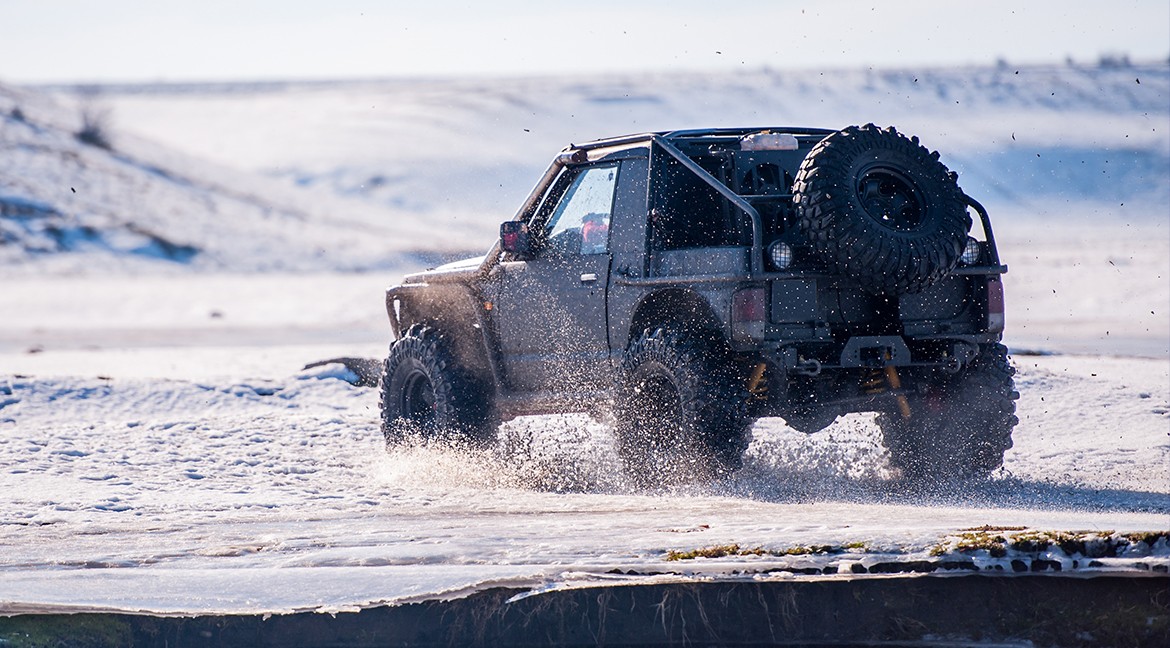
Car winch - how to choose and how to take care of it?
Spis Treści
For automotive use, an electric winch is the best option. This device has a wide range of applications and is primarily used for pulling heavy objects and vehicles. It is most commonly utilized for extracting off-road vehicles from difficult conditions. However, electric winches are also employed in tow trucks, industrial machines, automotive workshops, elevators, etc. The application of the device depends on the individual needs of the user. So, what should one know about this equipment?
**Construction and Functionality**
An electric winch is a device that has its own electric motor, drawing power from a connected car battery. Besides the motor, the winch is equipped with a reduction gearbox with a clutch and a brake. The mechanism of the device requires such fittings because this translates to high rotations converted into pulling power. Why? The fundamental and most important parameter is the pulling force measured in pounds (lbs) or kilograms. The pulling force should be matched to the weight of the vehicle (the heavier the vehicle, the greater the pulling force should be, which means we multiply the pulling force by twice the weight of our vehicle). The maximum pull can be found on one layer of the rope, meaning when the rope is fully extended from the drum. The principle is that it is better to develop more rope or pass it through a block, as this will double the winch's pulling capacity while avoiding overheating the motor. The motor of the electric winch drives a drum around which the rope and hook are wound. Aluminum guides or steel rollers situated in the device are responsible for the proper winding of the rope on the drum.
**What Affects Poor Longevity?**
The winch is primarily meant for regular use, so if it is not used regularly, it may break down. It is advised that the device be put into operation at least once a month. Why? The motor warms up, and possible water vapors will evaporate due to the heat, ensuring that the gearbox is properly lubricated. Additionally, it should be remembered to prevent corrosion, which means that before each use, it will be good to soak the winch in some penetrating oil. If we leave the device submerged without maintenance after use, we can be sure it will fail. Although the electric winch has sealed components, there will always be situations where some contaminants will cause destruction. In terms of protecting the gearbox, there is no way to completely seal it from water. However, if the gearbox is well-lubricated, water should not harm it, as it is lubricated with a grease that is immiscible with water.
**In Short, How to Increase Product Longevity**
- Maintain regular use of the winch (at least once a month);
- Soak the device in penetrating oil before use;
- Perform maintenance/service and proper drying;
- Clean electrical connections and tighten screws;
- A winch used in extreme conditions should be maintained more often.
**What Most Commonly Breaks in a Winch and Why?**
The most common fault in a winch is the old-style brake, which lacks proper construction. Such a brake should have an ideal plate and only be used in one direction. When the drum stops, the brake's job is to engage automatically and hold all the weight.
**Installation**
In some cases, installation may require replacing the suspension. This action depends on the model and mounting plate. When installing, care should be taken to ensure that the installation method does not interfere with the operation of the sensor system. If a winch is installed, its correctness should be checked first before proceeding with the electrical connection.

All comments